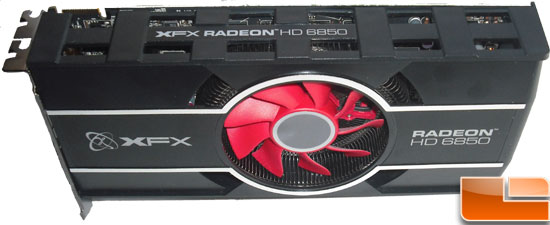


As you probably already know, Barts XT and PRO chips’ die size measures 255mm2. The slower HD 6850 comes with one 6-pin power connector. However, the additional power connector allows for overclocking beyond 900MHz. A single Watt that is the culprit, as the card will draw 151W while one connector can supply “only” 150W. Of course, fan speed can be controlled via Catalst Overdrive.įaster cards usually have two 6-pin PCIe power connectors but the HD 6870 had to have two. The cooler was almost inaudible in idle operation (43☌), and while it gets louder in FurMark tests, it isn’t too loud.

XFX HD 6870 didn’t go over 84☌ during our tests. Furthermore, it also means that you can sacrifice a couple of C and make the card quieter. Furmark testing caused the XFX HD 6850 temperatures to go up to 65 degrees Celsius, which speaks volumes on the cooler's quality. The BIOS sets the fan to 42% RPM in idle mode making the card pretty loud. The XFX HD 6850, on the other hand, gets loud both when idle and when gaming and it is definitely louder than XFX HD 6870. XFX HD 6870 is pretty quiet when idle, and it doesn’t get loud during gaming either. The card allowed an overclock to 930MHz GPU and 1180MHz for the memory and it resulted in 18% better results in Aliens vs. XFX HD 6850 is also a reference clocked card – the GPU runs at 775MHz, shaders at 775MHz and the memory at 1000MHz (4000MHz effectively).

On the other hand, the card is quiet when idle. Had the HD 6870 been just a tad bit louder during our tests (AUTO fan mode), we’d call the card loud, but it still isn’t unbearable. We managed to hit 990MHz for the GPU and 1100MHz for the memory by running the fan in AUTO mode, and it resulted in 8% better results in Aliens vs. We managed to hit 1010MHz for the GPU but only after we increased the fan RPM to 55%, where the fan ran pretty loud. CCC Overdrive limits the clocks to 1000MHz for the GPU and 1250MHz for the memory, so we relied on MSI’s Afterburner for our overclocking. HD 6870’s reference clocks are 900MHz for the GPU an 1050MHz for the memory, and our today’s XFX cards use reference design.


 0 kommentar(er)
0 kommentar(er)
